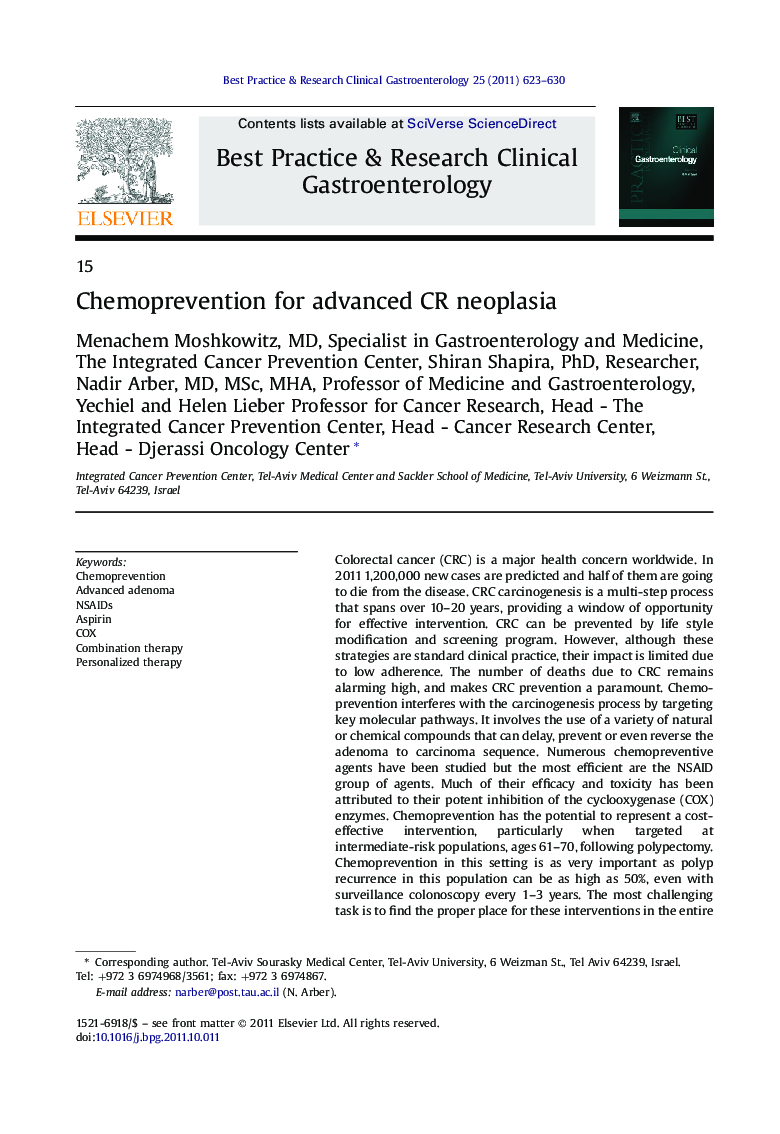| Article ID | Journal | Published Year | Pages | File Type |
|---|---|---|---|---|
| 3254224 | Best Practice & Research Clinical Gastroenterology | 2011 | 8 Pages |
Colorectal cancer (CRC) is a major health concern worldwide. In 2011 1,200,000 new cases are predicted and half of them are going to die from the disease. CRC carcinogenesis is a multi-step process that spans over 10–20 years, providing a window of opportunity for effective intervention. CRC can be prevented by life style modification and screening program. However, although these strategies are standard clinical practice, their impact is limited due to low adherence. The number of deaths due to CRC remains alarming high, and makes CRC prevention a paramount. Chemoprevention interferes with the carcinogenesis process by targeting key molecular pathways. It involves the use of a variety of natural or chemical compounds that can delay, prevent or even reverse the adenoma to carcinoma sequence. Numerous chemopreventive agents have been studied but the most efficient are the NSAID group of agents. Much of their efficacy and toxicity has been attributed to their potent inhibition of the cyclooxygenase (COX) enzymes. Chemoprevention has the potential to represent a cost-effective intervention, particularly when targeted at intermediate-risk populations, ages 61–70, following polypectomy. Chemoprevention in this setting is as very important as polyp recurrence in this population can be as high as 50%, even with surveillance colonoscopy every 1–3 years. The most challenging task is to find the proper place for these interventions in the entire effort of general wellbeing. Subjects are likely to be more adherent to prescribed regimens if cancer prevention may be combined with a cardiovascular and Alzheimer prophylaxis. Subjects with a normal colon or non advanced adenomas can be safely monitored with surveillance colonoscopy every 5–10 years. The ideal chemopreventive agent remains to be discovered with great emphasis on the need not to harm. Possibly, combinations of agents will maximize effectiveness while limiting drug toxicity. Finally, personalized approaches would include the ability to predict risk, as well as benefit for a specific individual based on specific SNP's or other genetic profiles.
